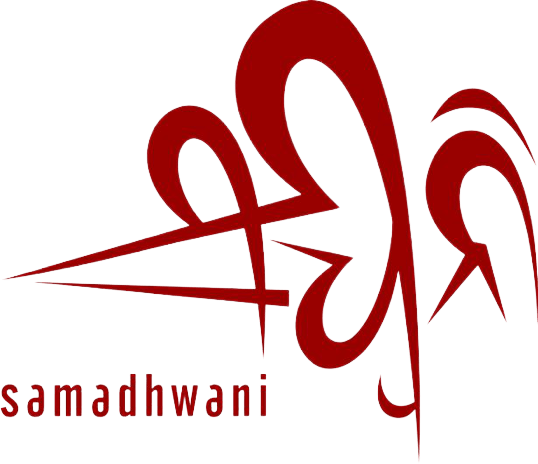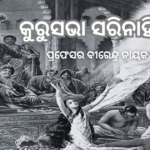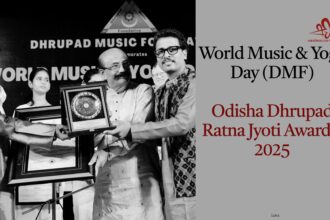Raga, a single word that encapsulates the essence of music for Indian classical music, is born from the musician’s understanding and mastery of taalim. Taalim, the rigorous training, and discipline that an artist undergoes, shapes their musical identity. It is through taalim that musicians conceive and give expression to the intricate nuances of a raga, the soulful melodies that transport listeners to ethereal realms. The artist’s years of devoted practice, the relentless pursuit of technical precision, and the assimilation of musical knowledge culminate in the artistry displayed in their renditions. Taalim forms the very foundation of an artist’s musical journey, allowing them to delve deep into the rich heritage of Indian classical music, exploring its myriad possibilities, and evoking emotions that resonate with the listener’s soul. Thus, taalim is not merely a training process but a transformative experience that shapes the artist’s understanding, interpretation, and embodiment of music, making it an inseparable part of their artistic expression.
Technically, “Taalim” is an Urdu term derived from the Arabic word “Taalim,” which means education, instruction, or training. In the context of Indian classical music, “Taalim” refers to the systematic and structured training or education that aspiring musicians undergo to master the art form. It encompasses the learning of various musical elements such as rhythm, melody, improvisation, composition, and performance techniques. Taalim plays a vital role in developing the skills, knowledge, and understanding necessary for a competent and expressive performance in Indian classical music. Apart from the technical aspects, taalim also encompasses the broader aspects of music learning, including the understanding of different improvisation techniques, and the aesthetics of performance. The taalim within a specific gharana plays a crucial role in shaping and preserving the distinctive style and ideological approach to artistic creation. This manner of rendition is passed down through generations, ensuring its continuity and evolution. Perfect taalim forms a strong understanding of the structure and progression of a performance and explore the nuances of expression and ornamentation. Traditionally, through the guru-shishya parampara (teacher-disciple tradition),
Talim under Guru-Shishya parampara
The importance of taalim (training) under one guru (teacher) in Indian music, particularly in the guru-shishya parampara (teacher-disciple tradition), is highly regarded and has several significant advantages. The guru-shishya parampara ensures the continuity of knowledge and preserves the lineage of a specific musical tradition. By receiving taalim under one guru, the student becomes part of a long lineage of musicians, inheriting the wisdom, techniques, and insights passed down through generations. This lineage-based education helps maintain the authenticity and integrity of the music tradition.
Taalim provides personalized attention and guidance tailored to the individual student’s needs, abilities, and musical goals. The guru closely observes the student’s progress, identifies strengths and areas for improvement, and tailors the teaching approach accordingly. This personalized instruction allows for a deeper understanding of the student’s unique musical journey and fosters a strong mentor-student relationship.
Under one guru, the student experiences a comprehensive and holistic approach to taalim. The guru imparts not only technical knowledge but also the nuances of expression, aesthetics, and interpretation that are difficult to convey through written or standardized methods alone. The holistic learning process encompasses not just the technical aspects of music but also the emotional, spiritual, and cultural dimensions, fostering a well-rounded musician. Each guru has their unique style, approach, and interpretation of the music tradition they represent. By undergoing taalim under guru, the student has the opportunity to immerse themselves deeply in a particular musical style or tradition. This focused training allows the student to develop a profound understanding of the stylistic nuances, characteristic elements, and distinctive features of that specific tradition, enabling them to become adept exponents of that style.
Taalim under one guru is built upon a relationship of trust, respect, and devotion between the guru and the student. The student places immense faith in the guru’s guidance and expertise, allowing for a deep and transformative learning experience. The devotion and surrender to the guru’s teachings create a conducive environment for the transmission of subtle nuances, intuitive aspects, and higher levels of musical understanding. It fosters an emotional and spiritual connection between the guru and the student, creating a profound bond rooted in shared musical experiences, values, and aspirations. This connection not only enhances the student’s musical growth but also contributes to their overall personal and artistic development.
Hence, taalim under the guru-sishya in Indian music ensures the continuity of the tradition. Provides personalized guidance, facilitates a deep understanding of a specific musical style, and establishes a profound mentor-student relationship. It is considered a sacred and transformative journey that shapes the student’s musicality, artistic expression, and contribution to the rich tapestry of Indian music.
Talim in Sitar
As with other forms of Indian classical music, sitar taalim is often passed down through the guru-shishya parampara, where the knowledge and techniques are transmitted directly from a sitar maestro (guru) to a dedicated student (shishya). This oral tradition allows for personalized guidance, observation, correction, and the imparting of subtle nuances that may not be easily captured in written notation. Taalim in sitar involves a comprehensive study of various aspects, including:
Playing Techniques:
Taalim focuses on the proper technique for playing the sitar. This includes learning how to hold the sitar, position the hands, and execute different finger movements for plucking the strings. Techniques such as meend (sliding), gamak (ornamentation), and taans (fast melodic passages) are also taught and practiced.
Understanding the Sitar:
Taalim involves an in-depth understanding of the sitar, including its construction, parts, and tuning. Students learn about the sympathetic strings, main playing strings, frets, and resonating chambers, gaining knowledge of how these elements contribute to the sitar’s unique sound.
Raga and Rhythm:
Since the sitar is primarily used to play melodies and explore ragas (melodic frameworks), taalim in sitar emphasizes the understanding and mastery of different ragas. Students learn the intricacies of each raga, characteristic phrases, and melodic ornamentation associated with specific ragas. Additionally, students study the relationship between ragas and taals (rhythmic cycles) to develop a strong sense of rhythm and timekeeping.
Composition and Improvisation:
Taalim in sitar involves learning traditional compositions (bandishes) within specific ragas. Students study compositions of different lengths, such as vilambit (slow tempo) and drut (fast tempo), and practice playing them with accuracy and expression. Additionally, improvisation plays a significant role in sitar playing, and students are taught techniques to improvise melodic variations within the framework of a raga, showcasing their creativity and musicality.
Through diligent practice, guidance from a skilled guru, and a deep dedication to the art, students of sitar taalim can develop their musicality, technique, and expressiveness on the instrument, allowing them to become proficient sitar players within the rich tradition of Indian classical music.
While there are generalizations about gharanas and the technical aspects of taalim, it remains true that each individual’s experience of taalim is unique and distinct from others. Within the realm of sitar learning, everyone has remarkable stories to share about their personal taalim journey and their relationship with their guru. These captivating narratives deserve to be included as chapters that enrich the broader understanding of sitar learning and the profound influence of gurus. By acknowledging the individuality of each taalim experience, we gain a deeper appreciation for the diverse paths that students traverse in their pursuit of sitar mastery and the invaluable role that gurus play in shaping their musical lives.
Changing Trends in Taalim
Traditional methods of sitar learning have witnessed some changes and adaptations in response to evolving trends. With the advancement of technology, online platforms have become valuable resources for sitar learners. Students now have access to instructional videos, virtual classes, and online tutorials, allowing them to learn at their own pace and from teachers around the world. Present guru-shishya parampara, many instructors are incorporating modern teaching techniques to cater to diverse learning styles. This involves using visual aids, interactive learning materials, and innovative teaching methodologies to enhance the learning experience.
Global musical trends and cross-cultural collaborations have increasingly affected the sitar tradition over the last two decades. Musicians are exploring fusion genres, experimenting with different musical styles, and incorporating elements from other traditions into their sitar playing. This cross-pollination of musical ideas has expanded the horizons of sitar learning and performance. While maintaining the traditional foundation, contemporary sitar learning encourages students to explore their own creativity and develop a unique musical voice. Teachers now focus on nurturing the individuality of each student, allowing them to experiment with improvisation, composition, and personal expression. Technology has made its way into sitar learning, with the use of electronic tuners, recording software, and digital notation tools. These aids can assist students in fine-tuning their playing, analyzing their performance, and sharing their music with a wider audience.
However, it’s important to note that while there have been changes, traditional values, and techniques still hold significant importance in the learning process. The evolving trends aim to complement and enhance traditional methods rather than replace them entirely.
